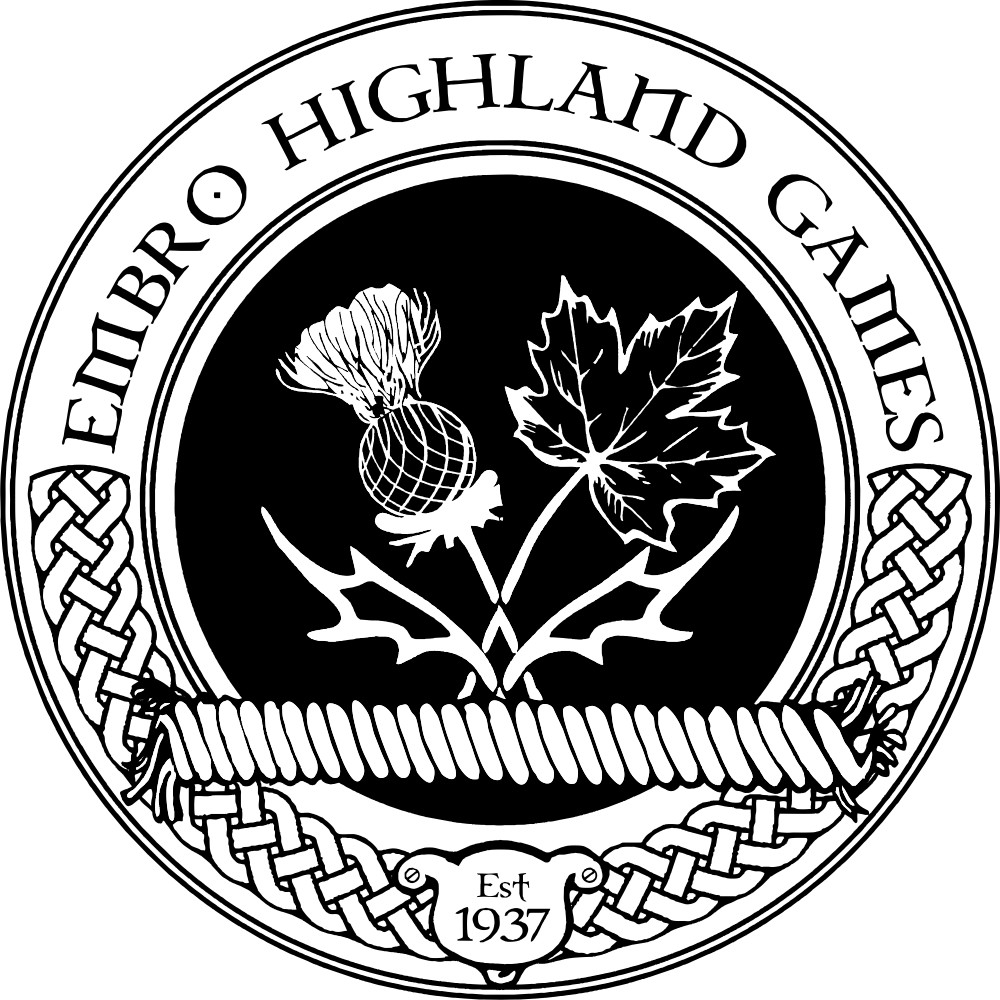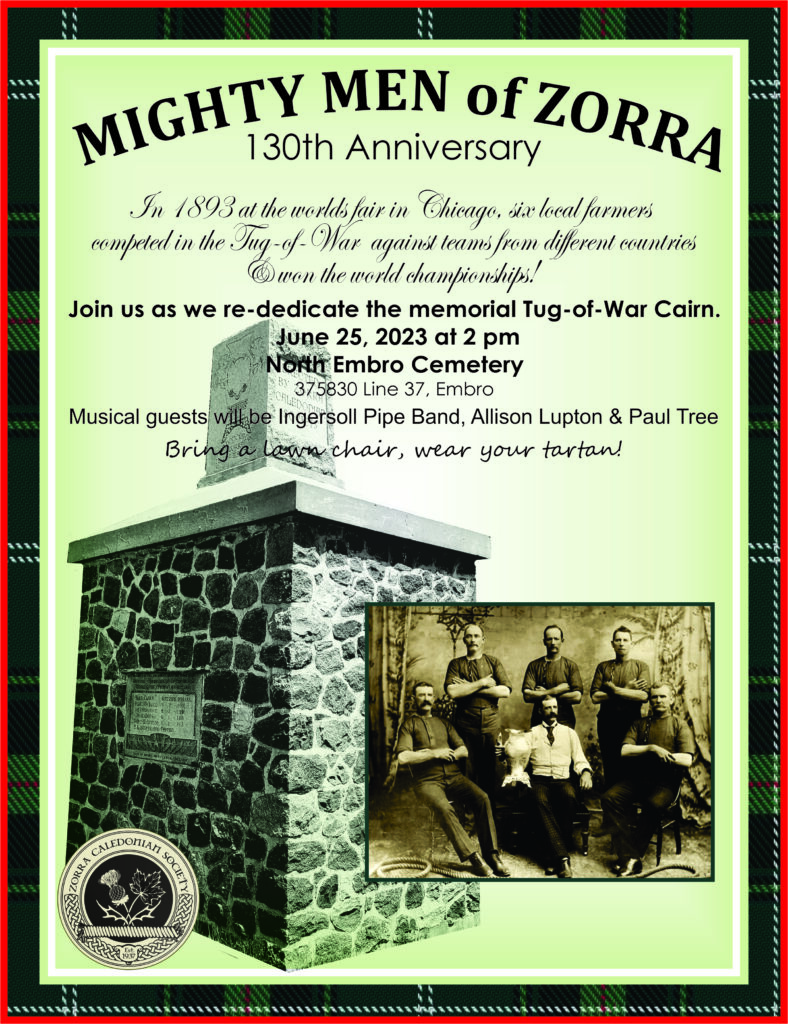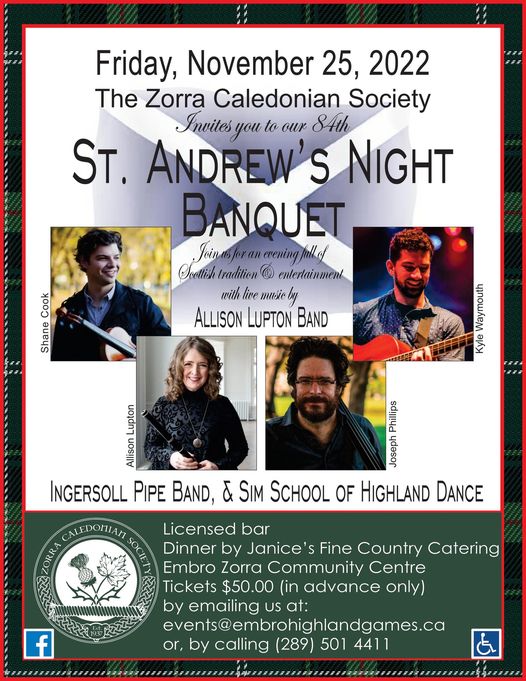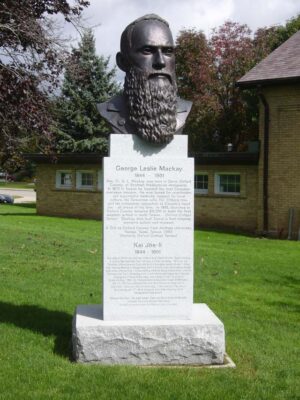Hello Everyone,
Please see this guest post from Embro Highland Games:
The Countdown is On!
We are officially 9 days away from the 2023 Embro Highland Games & excitement is stirring as we look forward to welcoming over 3,700 visitors!
July 1st will be a day of fierce rivalry as hammers are thrown, cabers are tossed, the skirl of the bagpipes fill the air as the flash of clan tartan surrounds us!
We are thrilled this year to once again include Tug-of-War in our event line up with teams coming from far afield as British Columbia & Wisconsin!
Musical headliner this year is the ever popular Celtic rock group The Mudmen.
Please feel free to share the Embro Highland Games poster with your members & readership!
Check out our new website at www.embrohighlandgames.ca





